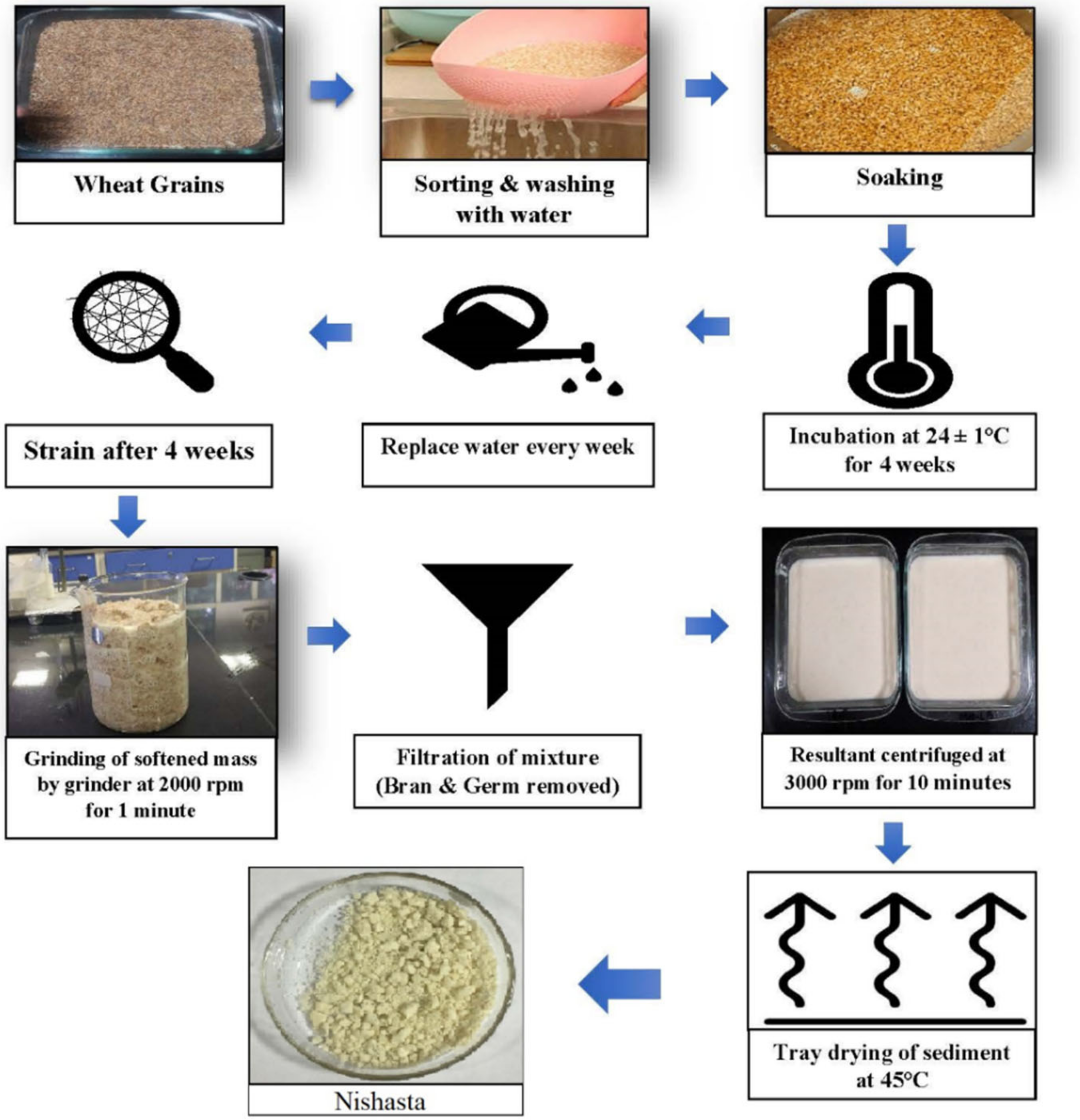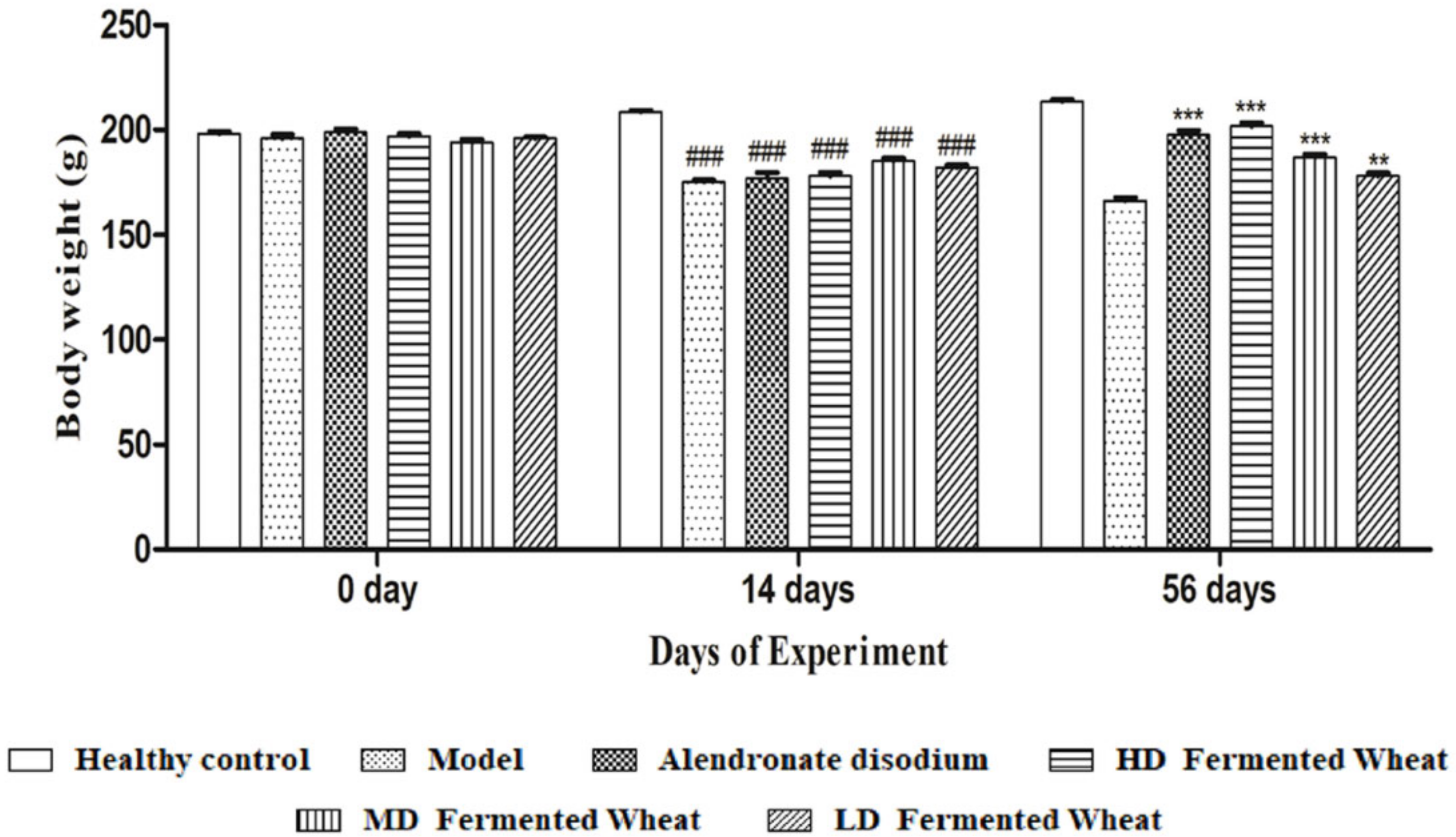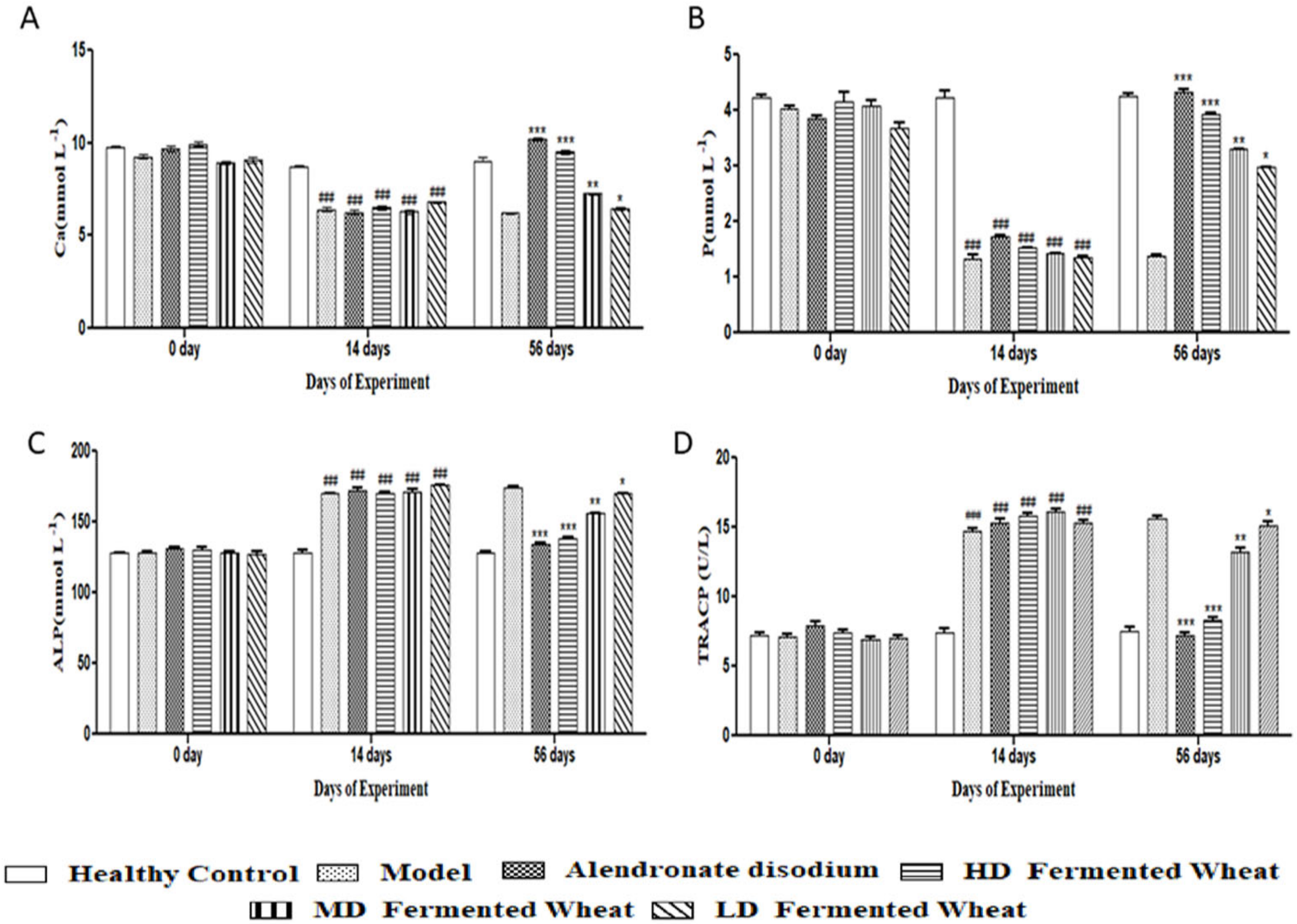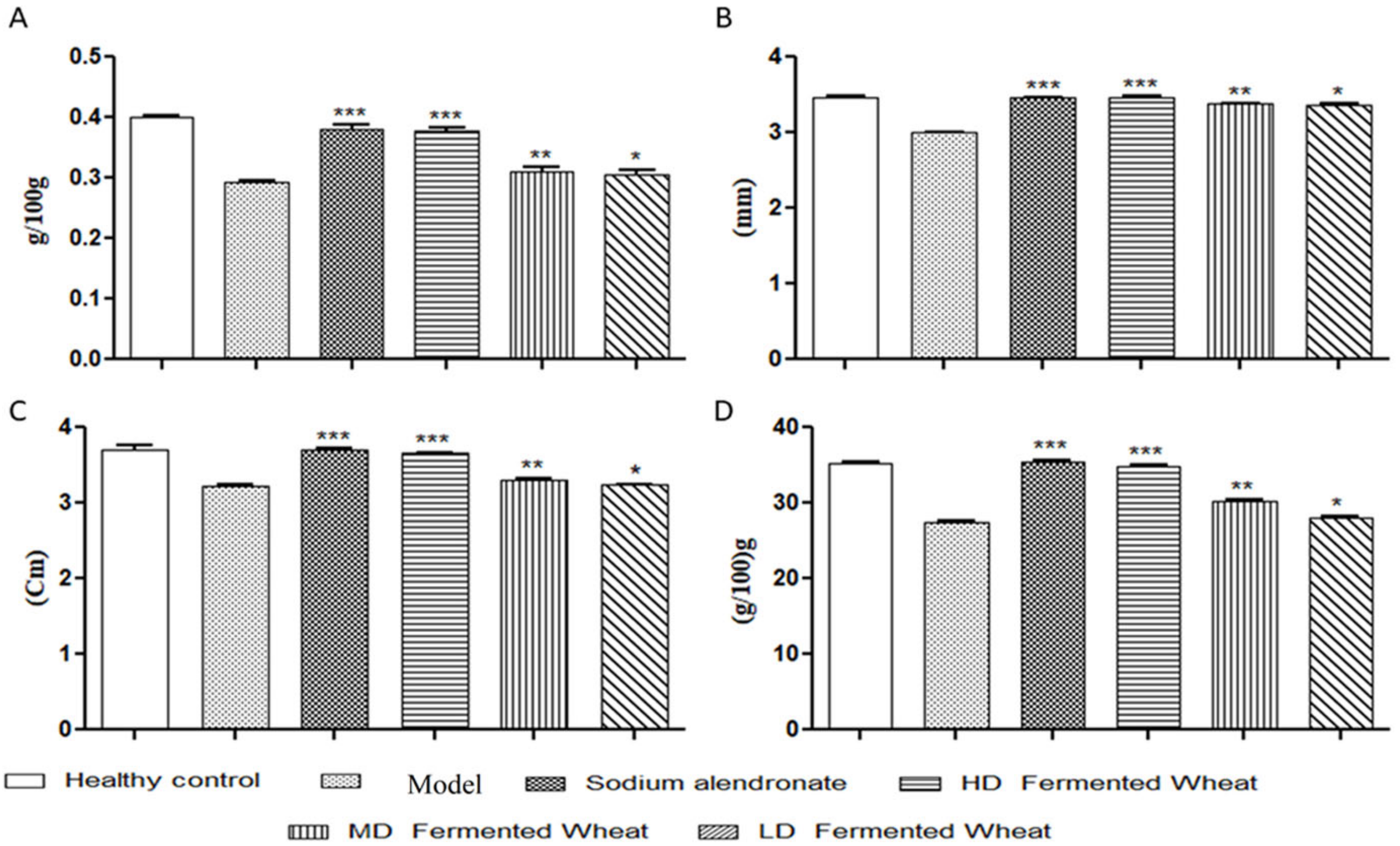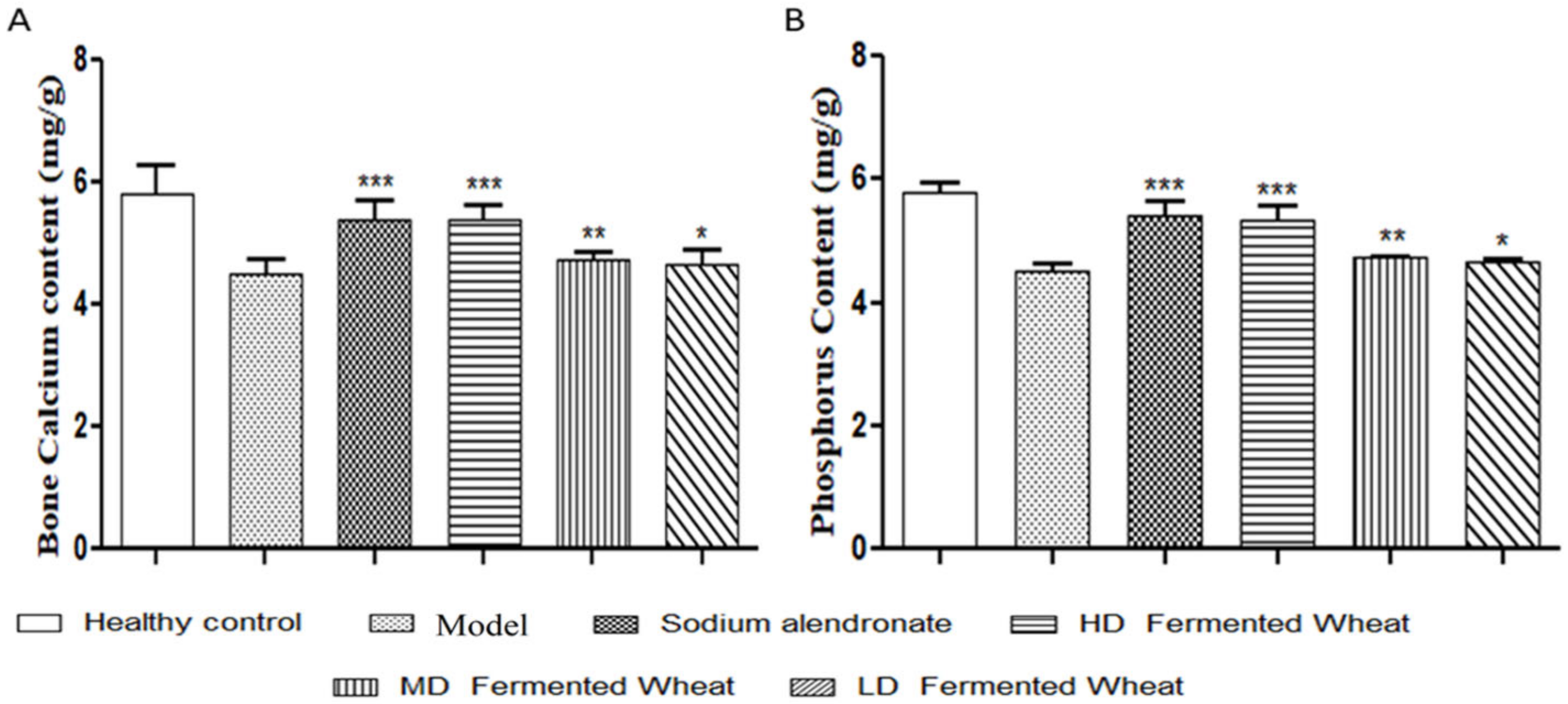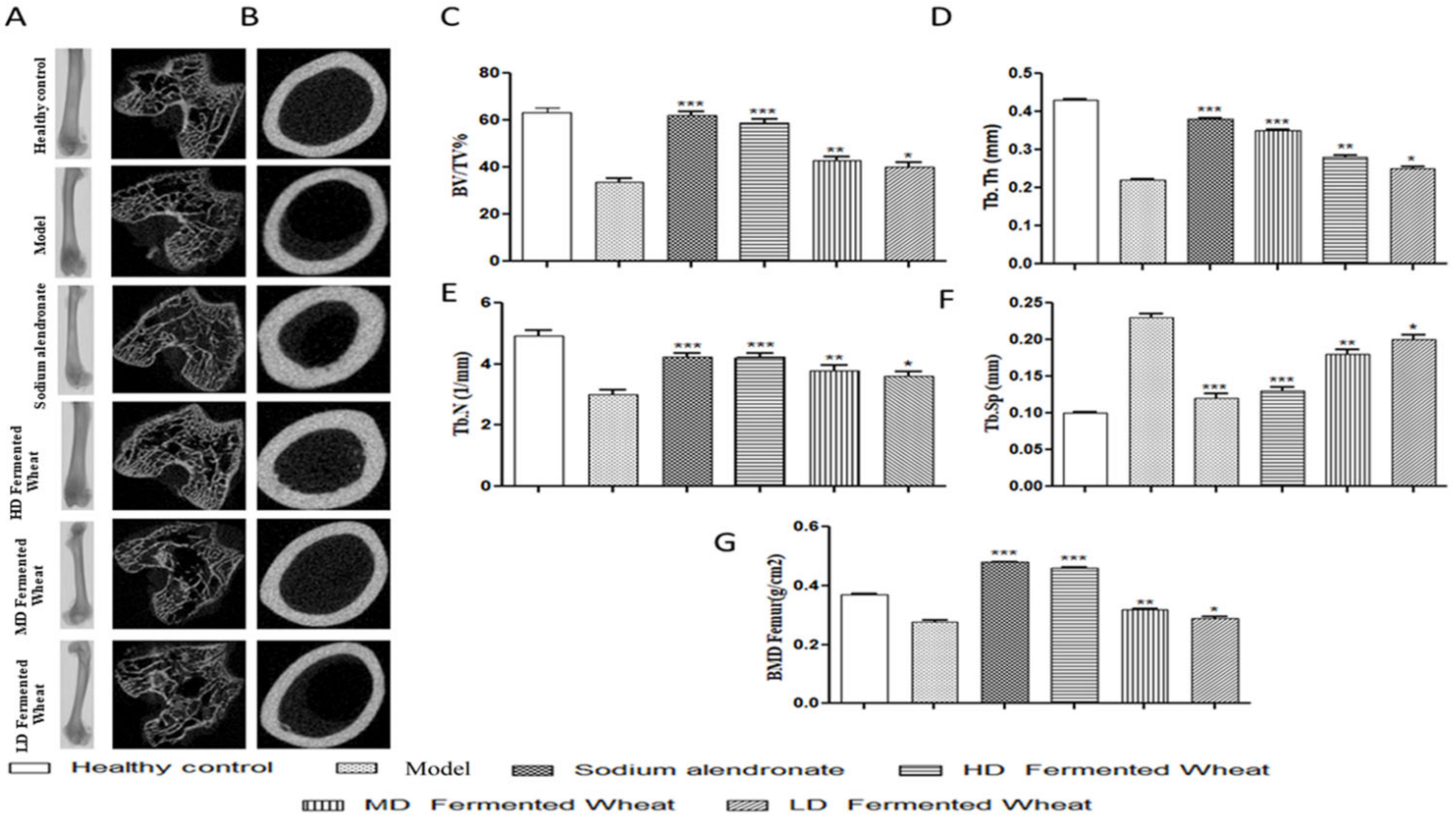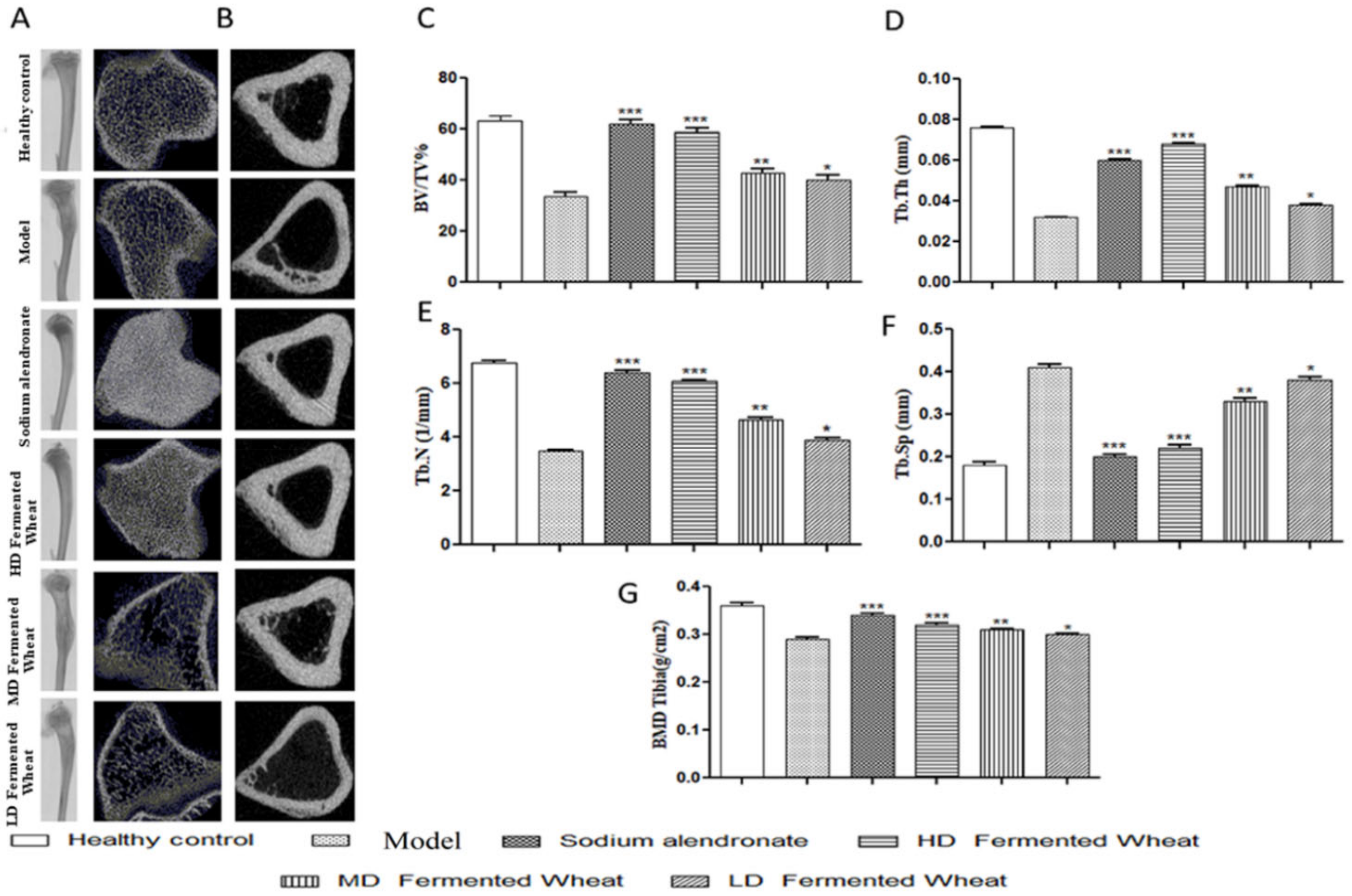1. Introduction
Osteoporosis is a progressive systemic disorder that is characterized by a loss of bone mass and disruption of bone microarchitecture that lead to bone fragility and increased risk of fractures. The incidence of osteoporosis is higher in elderly people. It is more common in women than in men. There are two types of osteoporosis. Type I or primary osteoporosis is characterized by rapid bone loss that occurs after the onset of menopause triggered by lower levels of estrogen. This in turn results in more bone resorption than bone formation. Type II or secondary osteoporosis occurs due the prolonged deficiency of calcium levels in the body. It mainly occurs with aging and is also called senile osteoporosis. It also occurs due to increased parathormone activity resulting a decline in the formation of bones [
1]. Osteoporosis is also caused by the use of drugs such as heparin, gluco-corticosteroids, and chemotherapeutic agents, by smoking or by the use of alcohol. Bones weaken to such an extent that a break can occur with minor stress or spontaneously. Prolonged pain and decreased ability to carry out normal activities are the symptoms of broken bones. There are many potential bone-forming drugs that are used against osteoporosis but their use is often associated with some serious side effects and does not decrease the risk of bone fractures significantly [
2]. Thus, there is a serious need to look for some alternatives such as food supplements that can decrease bone loss in the elderly and in women.
Fermented foods have emerged as one of the important areas of research in the field of food sciences. Diet and bone mass density are significantly correlated [
3,
4]. Several studies indicate that the consumption of fermented foods has proved beneficial in maintaining bone health in experimental animals [
5,
6]. Fermented food supplements have been found to be effective to ward off other deficiency diseases [
7,
8,
9,
10]. Different in-vivo and in-vitro studies have suggested that cereal-based fermented products improve bone health through the stimulation of bone formation and inhibition of bone resorption. Fermented soy products have been reported to promote the synthesis of osteoblast proteins and proliferation of osteoblasts that in turn improve bone consolidation. Increased bone density may be attributed to enhanced calcium and phosphorus contents in the bone tissues [
11,
12].
This study has its basis on a traditionally used fermented wheat preparation called Nishasta in Kashmir Province of Jammu and Kashmir, India. It is widely used as a general tonic particularly in postpartum and postmenopausal women. Nishasta is conventionally prepared by soaking and fermenting wheat grains in water for about one month to allow natural fermentation to take place. The water is changed every week to allow fresh microbial growth. This is followed by crushing the grains and filtering the residue through a muslin cloth and then drying [
13]. The main objectives of the study were (a) to characterize the microbial composition of Nishasta and (b) to evaluate its effectiveness in improving the bone health parameters in retinoic acid-induced osteoporotic rats. In this study, retinoic acid was used to establish a rat model for osteoporosis, and the preventive effect of Nishasta was investigated using this model.
2. Material and Methods
2.1. Materials
MRS agar (cat. M641) was purchased from HiMedia, Mumbai, India. Retinoic acid (cat. R2625) was obtained from Sigma Aldrich, Mumbai, India. Sodium alendronate was procured from Apex Healthcare Limited, Ankleshwar, Gujarat, India. Commercial kits for the determination of calcium (cat. MAK022), phosphorus (cat. MAK308), hydroxyproline (cat. MAK357), tartrate resistant acid phosphatase (cat. P13686), and alkaline phosphatase (cat. SCR004) were purchased from Sigma Aldrich, Mumbai, India. All other chemicals and reagents of analytical grade were purchased from SD Fine Chemicals, New Delhi, India.
2.2. Method of Fermentation and Analysis
Wheat (
Triticum aestivum variety Shalimar Wheat 1) was procured from the Sher-e-Kashmir Agriculture University of Science and Technology, Srinagar, Jammu and Kashmir, India, under the registration No. Au/MRCFC/FS/332. Wheat grains (1000 g) were sorted and washed with water. The grains were then soaked and incubated with water (1:3
w/
v) at room temperature (25 ± 1 °C) for a time period of four weeks. Water was replaced every week in order to allow fresh microbial growth to affect natural fermentation. At the end of the four weeks, the water was strained and the softened mass was ground in an electrical grinder at 2000 rpm for one minute. The mixture was filtered through a muslin cloth to remove germs and bran. The resulting filtrate was centrifuged at 3000 rpm for 10 min. The sediment was spread in shallow trays and dried at 45 °C. Three batches of Nishasta were prepared using the same procedure. The methodology followed for preparing Nishasta is conventionally used to prepare other traditional Indian fermented products [
14]. Dried Nishasta powder was subjected to proximate analysis using AOAC methods [
15].
2.3. Isolation and Molecular Characterization of Microbes
Nishasta samples were suspended in sterile water (10% w/v), mixed thoroughly, filtered, and gradually diluted. Dilutions up to 10−5 were prepared and applied to MRS (DeMan–Rogosa–Sharpe) agar plates in duplicate, and all plates were incubated at 37 °C for 24–48 h. The culture characteristics and morphology of colonies were observed, and colonies with similar patterns were selected. Pure colonies were inoculated with MRS liquid medium (5 mL) and cultured at 37 °C for 18–24 h. The above 1 mL medium was centrifuged at 12,000 rpm for 1 min, the supernatant was discarded, and 200–500 μL of sterile normal saline was added. Genomic DNA was isolated from a 0.1 mL sample of overnight cultures grown in MRS liquid medium. gDNA was isolated from all bacterial isolates and used as template for PCR. The primers used for the amplification of parts of 16S rRNA were forward: 5′-AGAGTTTGATCMTGGCTCAG-3′; reverse: 5′-TACGGYTACCTTGTTACGACTT-3′. The 16S rRNA gene of the samples was amplified by PCR polymerase, and the product was checked by agarose gel electrophoresis. The PCR product was sequenced bi-directionally, and then the data were aligned and analyzed to identify the sample. The PCR product size was ~1.5 kb, and a 500-base pair DNA ladder was used to estimate the size of DNA fragments. Sequencing was performed by using an ABI 3500 Genetic Analyzer in which a POP-7 Polymer and 50 cm Capillary Array were used. A BigDye® Terminator version 3.1 Cycle Sequencing Kit (Thermo Fisher Scientific, Wilmington, DE, USA) was used in combination with an Applied Biosystem Micro Amp Optical 96-Well Reaction plate. The sequencing reaction mix volume was 10 µL, which contained 4 µL of ready reaction mix, 1 µL of the template (100 ng/µL), and 2 µL of primer (10 pmol/µL) with 3 µL of Milli Q water. The PCR for sequencing was completed in 25 cycles. Initial denaturation was performed for 5 min at 96 °C followed by denaturation for 30 s at 96 °C. Hybridization and elongation were performed at 50 °C for 30 s and 60 °C for 1.30 min, respectively. Phylogenetic Tree Builder was used to generate a phylogeny tree from 16S rRNA sequences aligned with System Aligner. A distance matrix was generated using the Jukes–Cantor corrected distance model. While generating the distance matrix, only alignment model position was used, alignment inserts were ignored, and the minimum comparable position was 200. Bootstrap analysis was used to determine the stability of the phylogenetic tree. The process was repeated 100 times, and a majority consensus tree was displayed showing the number of times (or percentage) that a particular group was on each side of a branch without subgrouping.
2.4. Animals and Experimental Design
The general guidelines of the Committee for the Purpose of Control and Supervision of Experiments on Animals (CPCSEA) for the care and use of laboratory animals were strictly adhered to during the study. The study protocol was approved by the Institutional Animal Ethics Committee (IAEC), Jamia Hamdard (Registration No. 173/GO/RE/S/2000/CPSEA) under the proposal number 1597. Thirty-six female Wistar rats aged 90 days with a body weight range of 180–200 g were supplied by the Central Animal House Facility, Jamia Hamdard, New Delhi. Six rats were housed in each polypropylene cage placed in a room with a 12-h/12-h light–dark cycle, 50 ± 10% relative humidity, and 23 ± 1 °C temperature. The animals had free access to water and diet. Animals were acclimatized for one week before the experiment.
Before the administration of samples, the rats were fasted for 12 h. A total of 36 Wistar rats were used for the study, of which 30 rats were administered retinoic acid (70 mg/kg, p.o.) once a day for 14 days in order to induce osteoporosis. After the induction of osteoporosis, the rats were randomly distributed into five groups of six rats each. Rats receiving retinoic acid acted as the model (
n = 6). The positive control rats were administered sodium alendronate (3.75 mg/kg, p.o.) once daily for the next 42 days. The treatment groups were administered 200, 150, and 100 mg/kg of fermented wheat, once daily for the next 42 days by oral gavage. These constituted high-, medium-, and low-dose fermented wheat treated groups and were indicated as HD-FW, MD-FW, and LD-FW, respectively. Doses administered were selected and adjusted according to the body weight of the rats on a daily basis [
16]. All test samples were prepared using 0.5% CMC in distilled water as the vehicle. The remaining six rats served as healthy control animals and were administered an equivalent amount of vehicle orally (1 mL/kg body weight). The blood samples from rats were collected at pre-determined intervals (0, 14 days and 24 h after the last dose of the treatment schedules) for biochemical analysis. Urine samples were also collected at these intervals for the estimation of calcium and phosphorus in urine. Finally, the rats were sacrificed and their hind legs were dissected. The abdomen was cut open to harvest kidneys, liver, pancreas, spleen, lungs, and heart. The organs were fixed with 10% formalin solution for 12 h and embedded in paraffin. Five micron (5 µm) cryostat sections were stained with hematoxylin and eosin dyes. The sections were examined under a light microscope at power magnifications of 40× and 10× to study changes in the tissue architecture and for capturing photomicrographs.
2.5. Measurement of Bone Quality Parameters
The femoral bones were dissected from the animals, and the adhering tissue was cleaned with the help of a sterile surgical blade. The femur bone was weighed to obtain the bone weight index (g/100 g body weight). The diameter and length of bones were measured by using stainless steel Vernier calipers (Fowler 52-085-040). Bones were dried at 110 °C for about 2 h and the weight of bones recorded. The trabecular volume, thickness, number, and separation of femoral bones were calculated [
17]. The femur samples were dipped in phosphate buffer solution at room temperature, and BMD was measured by a dual energy X-ray bone densitometer apparatus (Discovery A model, Hologic software version 12.5, SN = 08EƟ2Ɵ49 and Skyscan 1076, version 3.1 Aartselaar, Belgium) at a nominal resolution used in the case of small animals and was expressed as the bone mineral content per unit area. The X-ray source was set to 70 kV and 100 mA [
18]. For the determination of the ash content, the femur bone was dehydrated followed by incineration in a muffle furnace at 750 °C for 9 h. The ash was extracted with 6N HCL, and the contents of phosphorus and calcium were determined [
19].
2.6. Biochemical Estimations
Blood samples were collected at pre-determined intervals as mentioned above, and serum was obtained by centrifugation at 3000 rpm for 10 min at 4 °C. Calcium and phosphorus levels in the serum were measured by atomic absorption spectrometry after sample preparation as per the manufacturer’s instructions. Urine samples were centrifuged at 3000 rpm for 10 min, the supernatant was collected for subsequent analysis, and the concentration of urinary calcium and phosphorus was estimated. The sample preparation was carried out as per the assay kits’ instructions. Serum TRACP and ALP activities were measured by spectrophotometry. For their estimation, the blood samples were centrifuged at 1000 rpm for 20 min. The supernatant was collected and incubated at 37 °C. The absorbance was recorded at 450 nm [
20]. The values for TRACP and ALP were expressed in U/L and mmol/L, respectively. For HOP estimation, the urine samples from rats were treated with hydrochloric acid and incubated for 3 h at 120 °C. This was followed by adding 5 mg of activated charcoal, mixing on a vortex mixer, and centrifugation at 10,000×
g for five minutes. The supernatant was collected, and the HOP level was determined by recording the absorbance at 562 nm, which was reported as mM/mg [
21].
2.7. Statistical Analysis
All determinations were carried out in triplicate, and the data were expressed as the mean value ± SD. The results were analyzed by ANOVA using Student’s t-test procedure to determine the level of significance; p values of less than 0.05 were considered to be statistically significant. The analysis was performed using GraphPad Prism software (GraphPad Software Inc., Version 7, Chicago, IL, USA).
4. Discussion
Fermented foods and beverages have been the part of the human diet for a long period of time. Fermentation is used for food preservation and/or to improve taste. It also results in enhancement of the content of food constituents such as vitamins, proteins, essential fatty acids, and amino acids. A number of fermented foods are derived from milk, cereals, soybeans, fruits, vegetables, legumes, and fish. The unique flavor and texture of fermented foods are due to the presence and activity of microorganisms, commonly referred to as probiotics. Wheat constitutes a vital portion of staple food for a large part of the global population. It is consumed as a whole grain, soft wheat or as flour. It is also utilized in the preparation of fermented foods such as Injera and Khambir or beverages such as Boza, Kishk, and Trahana in different regions of the world [
9]. India also has a long history of the use of wheat-derived fermented foods such as Dosa, Dhokla, Idli, Khaman, Nishasta, Seera, etc.
Nishasta is a traditional fermented wheat preparation used in Kashmir Province of Jammu and Kashmir and other Himalayan regions in the north of India. It is a reputed general tonic used particularly by postpartum and postmenopausal women. There are two purported methods for the preparation of Nishasta. One involves soaking the pre-washed wheat grains for one or two days, followed by grinding and straining or decanting the resultant mixture to remove the bran, and finally drying. The other method follows a traditional procedure that involves soaking of pre-washed wheat grains in water for few weeks in a closed container to allow natural fermentation to take place. The water is changed every week to allow fresh microbial growth. This is followed by crushing of the grains by hand and filtering the residue through a muslin cloth and drying [
13]. The latter method effectively allows the fermentation to takes place and was followed in the current study for the preparation of the samples. The current study aimed to characterize the microbial composition of Nishasta and to explore its effect in retinoic acid-induced osteoporosis in female Wistar rats.
Fructans constitute the predominant component of the whole wheat grains in the form of inulin and other oligofructose derivatives. They represent the non-digestible polymers of fructose with a mean degree of polymerization of 25. This non-digestible portion of wheat forms the fermentable dietary fiber (prebiotics). Microbial fermentation of wheat results in the formation of partially hydrolyzed products such as short-chain fructo-oligosaccharides. Their effects on calcium absorption and bone mineral density are well established [
22,
23]. The wheat bran also contains phytic acid and its derivatives that have been shown to decrease the bioavailability of calcium, thereby acting as anti-nutrients. Fermentation serves the additional purpose of decreasing the content of phytic acid derivatives from the fermentation milieu.
The bacterial isolates from the fermented wheat were examined based on culture characteristics and macroscopic analysis. The results of microbial characterization revealed the presence of ten clones of Lactobacillus plantarum in the fermented preparation with L. plantarum NF3 as the predominant strain. L. plantarum is a facultative lactic acid bacterium that is mainly found in the fermentation of plant-derived raw materials. The average microbial count was 2.4 × 103 CFU/g of sample. The study established that Nishasta contains a bolus of useful microbes and thereby can act as a probiotic.
A systemic bone disorder that results in diminished bone mass, increased risk of fractures, and altered micro-structure of bones is called osteoporosis. Several plant constituents have been reported to be beneficial in osteoporosis in experimental animals. These include soy isoflavones [
24,
25], quercetin [
26], naringin [
27], and diosgenin [
28]. Fermented
Moringa oleifera has been reported to be beneficial against bone loss [
29] and hepatic adiposity and glucose intolerance [
30]. This study aimed to evaluate the effect of feeding fermented wheat to Wistar rats with retinoic acid-induced osteoporosis. Retinoic acid administration is known to damage the function of ovaries and reduce the estrogen level, thereby resulting in osteoporosis. This in turn activates osteoclasts and increases bone absorption [
31].
Bone loss occurs when the extent of bone resorption is greater than bone formation. Several bone biochemical markers such as ALP and TRACP allow a dynamic evaluation of the bone-curative effect of the treatment regimens. ALP and TRACP are the prime biomarkers predicting bone differentiation and bone formation. These markers are up-regulated under osteoporotic conditions [
32]. The serum calcium and phosphorus levels showed marked increases in the fermented wheat-treated groups compared with the model. Levels of serum ALP and TRACP decreased significantly in fermented wheat-treated groups compared to the model. The restorative effect of wheat treatment was comparable to sodium alendronate. Fermented wheat successfully truncated the increased levels of serum TRACP and ALP, which indicated that it inhibited bone resorption and improved bone differentiation in retinoic acid-induced osteoporosis in Wistar rats. The excretion of calcium, phosphorus, and HOP in urine increased significantly after retinoic acid was administered for 14 days compared with the healthy control. The excretion of calcium, phosphorus, and HOP in urine decreased significantly in fermented wheat-treated animals compared with the model.
From the results, it is quite clear that the bone weight index in the model was significantly lower than that in the healthy control (p < 0.05). Upon treatment with the high dose of fermented wheat, the bone weight index improved significantly compared with the model (p < 0.05). The index was 0.38 ± 0.01 with a high dose compared to 0.29 ± 0.02 in the model. The femoral head diameter and length of the femur increased after treatment with fermented wheat. The effect of the high dose of fermented wheat was particularly comparable to sodium alendronate. Retinoic acid significantly decreased the ash content of the femur bone when compared with that of healthy rats (p < 0.05). The bone ash content in fermented wheat-treated animals showed a marked improvement (34.85 ± 0.21 g/100 g for animals administered a high dose of fermented wheat compared to 27.43 ± 0.15 g/100 g for the model). A dose-dependent effect of fermented wheat in improving the bone parameters was generally observed. Upon administration of retinoic acid, bone calcium and phosphorus levels decreased significantly. Treatment with fermented wheat markedly improved the bone calcium and phosphorus contents compared with the model. Fermented wheat did not exhibit a dose-dependent effect in increasing the bone calcium and phosphorus contents. Treatment with sodium alendronate was able to restore their contents significantly (p < 0.001).
Calcium and phosphorus represent the main mineral components of bone tissues. These are also essential in maintaining bone density. Retinoic acid-induced osteoporotic animals exhibited reduced levels of serum calcium and phosphorus. An increase in osteoclasts in osteoporosis promotes bone resorption and enhances bone mineral dissolution. Subsequently, calcium and phosphorus levels decrease in bone and increase in urine. Increased urinary calcium excretion suggested increased bone resorption. Administration of fermented wheat reduced the levels of urinary calcium and phosphorus, indicating a resumption of mineral homoeostasis. Salts of calcium are incorporated in collagen fibrils of bones [
33]. Breakdown of collagen fibrils occurs during bone loss, resulting in the appearance of HOP in urine. An increased content of HOP indicates more breakdown of collagen and it is considered as an index of bone absorption [
34,
35]. It was found that the fermented wheat substantially decreased the excretion of HOP and thus prevented bone deterioration. Decreased levels of phosphorus in urine may be due to its enhanced transport across the border membrane. Treatment with fermented wheat also produced a substantial increase in the phosphorus content of bones.
Gross changes in the micro-structure and BMD of the femur of rats after retinoic acid administration were also observed. Treatment with fermented wheat (200 mg/kg b.w., HD-FW) alleviated the effects of retinoic acid and helped in maintaining and rebuilding the bone microstructure. It also showed enhancement in the trabecular volume percentage, thickness, and number, as well as a decrease in trabecular separation compared with the model. Administration of retinoic acid to rats produced significant decreases in femoral BMD that were significantly reversed after treatment with fermented wheat in a dose-dependent manner compared to the model. This also increased bone mass and mineral density. The results showed that fermented wheat had a restorative effect against osteoporosis. The effect was similar to that of sodium alendronate. Treatment with fermented wheat prevented the loss of bone calcium and phosphorus and improved BMD in osteoporotic rats. Improvement in bone health parameters with fermented wheat was in agreement with the decrease in urine calcium and phosphorus contents in treated groups. Moreover, treatment with fermented wheat increased the length of the femur and diameter of its head. The bone weight index also increased significantly. Similarly, the dimensions of the tibia head and length were normalized by fermented wheat treatment.
The results also demonstrated that the fermented wheat-treated rats had better bone calcium, phosphorus, and ash contents compared with the model. The bone mass restoring effect of fermented wheat in osteoporotic rats was evident. It is well known that there is a decrease in bone weight during osteoporosis, and the same was seen in rats administered retinoic acid. The bone weight of the retinoic acid-treated rats was lower than that of the healthy control. Upon treatment with fermented wheat, the bone weight index of the rats returned to normal. These results indicated that fermented wheat played an active role in enhancing the overall bone quality. Our results are in agreement with the reports advocating the use of dietary components to improve bone quality [
36,
37]. It is noteworthy that the treatment with fermented wheat significantly ameliorated the changes induced by retinoic acid in vital organs (See
Supplementary Material, Figure S1). The body weight of the rats also decreased during induction of osteoporosis in all groups except the healthy control. The trend was reversed after treatment with fermented wheat. The restorative effect was more pronounced with the high dose of fermented wheat (200 mg/kg) than the medium and low doses.
One of the possible explanations for the beneficial effects of Nishasta in osteoporosis is the enhanced production of short-chain fatty acids (SCFAs) by providing suitable substrates in the gut (prebiotic). It also adds to the gut microbiotic composition by providing homologs of
Lactobacillus plantarum (probiotic). Microbial fermentation and hydrolysis reactions transform prebiotics to SCFAs, thereby lowering the pH of the intestinal luminal contents [
38]. Greater acidity in the colon is known to release calcium from negatively charged metabolites such as phytates, which in turn increases its availability for absorption and subsequent bone mineralization. Prebiotic fibers have been shown to increase the intestinal content of SCFAs in animal models [
39,
40,
41]. Moreover,
L. plantarum has been reported to prevent retinoic acid-induced osteoporosis in rats [
42]. On the basis of the foregoing account, Nishasta is postulated to prevent the bone destruction in retinoic acid-induced osteoporosis through prebiotic- and probiotic-assisted bone mineralization.
